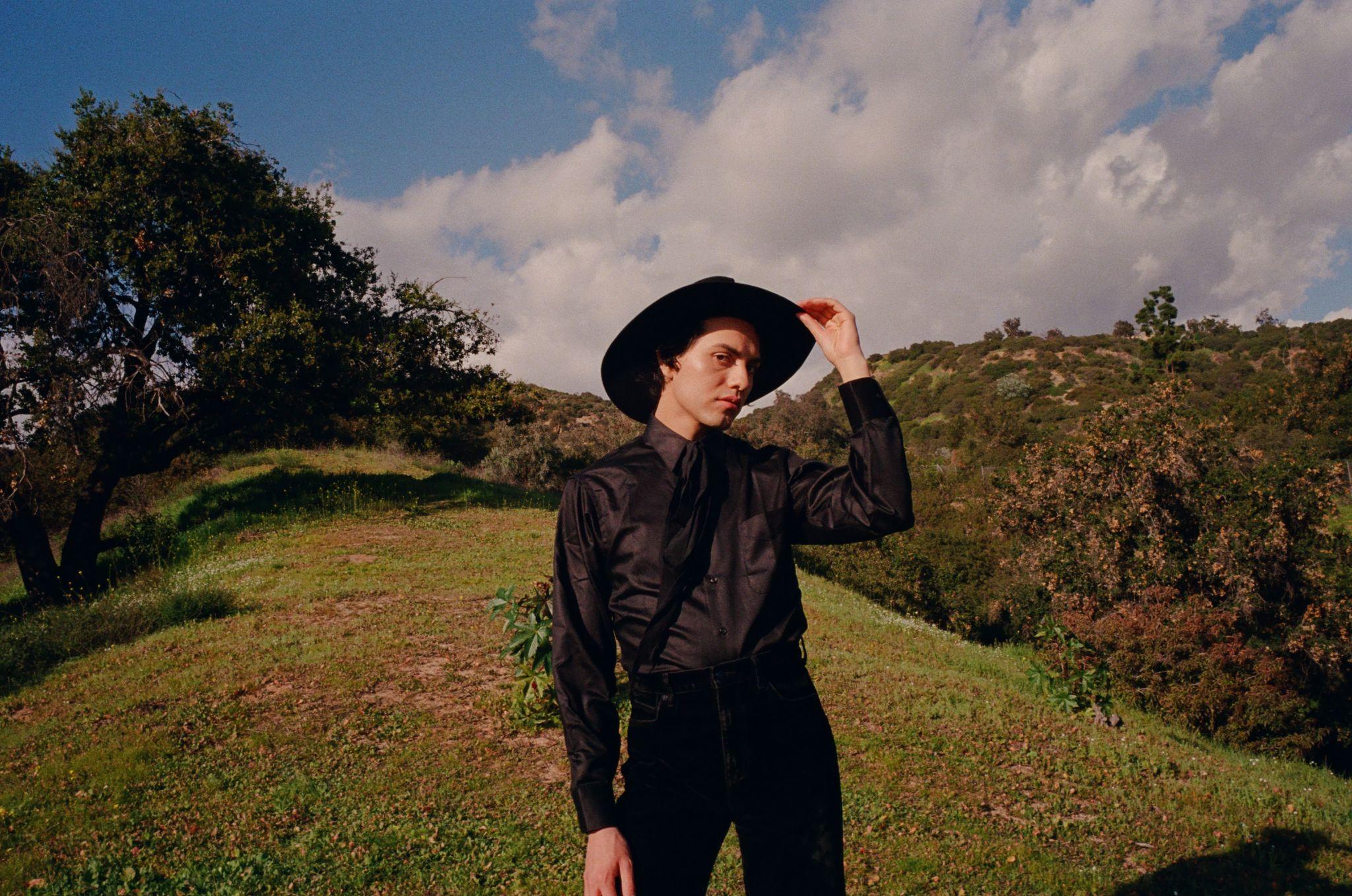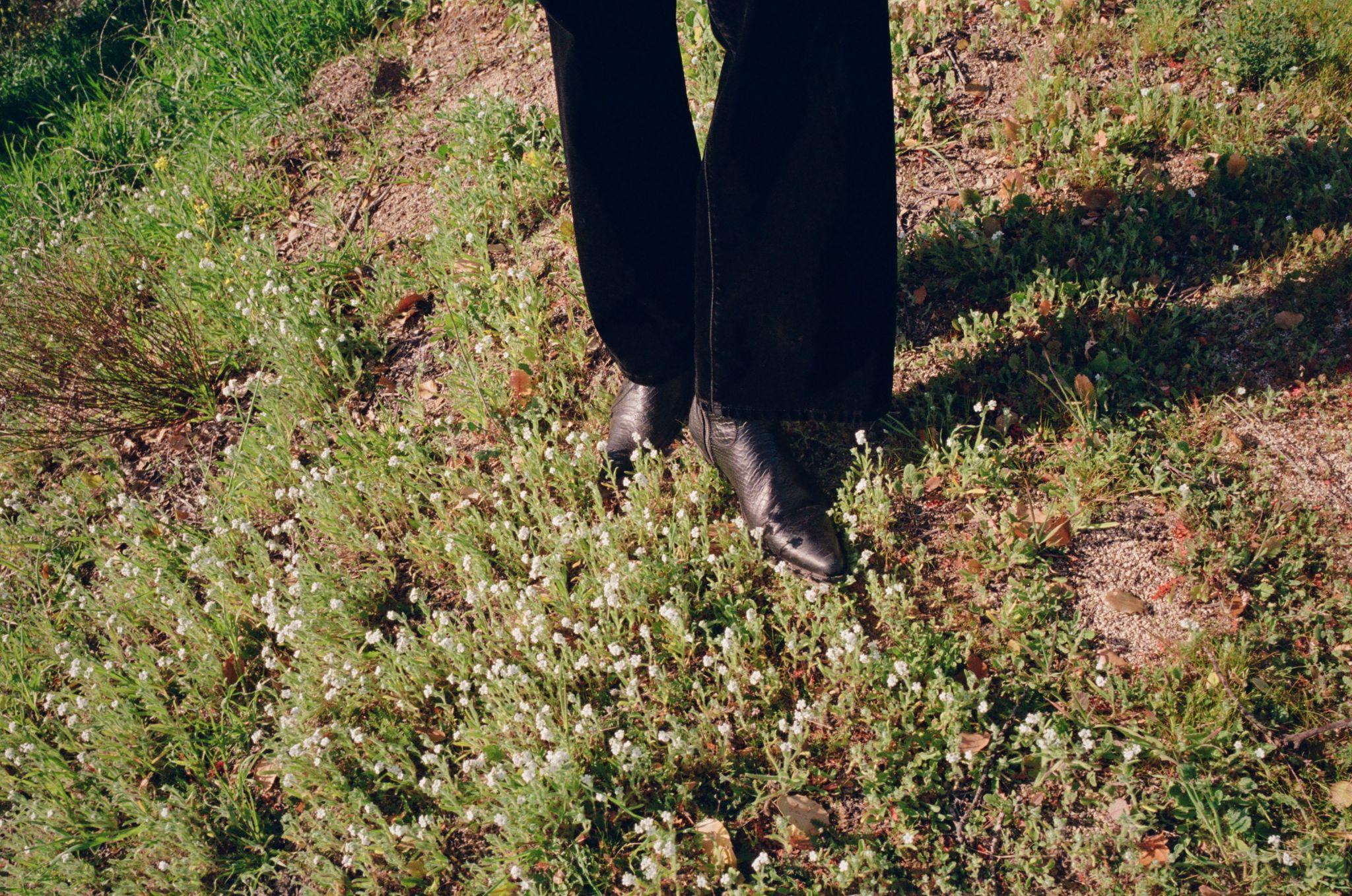Amadour’s Newest EP “Western Movie Dream” Can Be Your Fantasy, Too


It’s not often that I feel as if I am listening both to an old soul and my inner child at once, yet that mysterious tension is precisely what makes Western Movie Dream, Amadour’s newly released EP, so compelling. With five tracks, two of which are poems and two of which have only voice and piano, the music has a refreshing simplicity that keeps a listener engaged with its evocative, lavish storytelling.
Western Movie Dream is giving a 1950s/60s club scene—luxurious, plush, intimate, dimly lit by a candelabra set on the baby grand piano. Everyone is captivated; a romantic saga is unfolding. The EP achieves this effect by stripping back the instrumentals: there is plenty of space for Amadour’s vocals and lyrics to take center stage, and to invite the audience to entertain their own imaginative reveries. In “Velvet Sky – Poem Pt.1” and “Wild Mustangs – Poem Pt. 2,” Amadour’s words become everything, almost like matter-of-fact stage directions, underscoring the scenery sonorically. Evoking an improbable Sinatra and Liberace collaboration with a contemporary twist, “Before Grapes Ripen” and “Two Hands Holding Me” captivate the audience with big cadenzas, major chords, and elegant vocals. We hear multiple variations of a classic tale told time and time again – “It’s you, my love, I see you smile… our souls are meant to meet.” These are not the types of songs I listen to in my daily grind, they contain too much emotion and imagination.

Like the contrasts of a chiaroscuro painting, the moody nightclub scene puts Amadour’s dreamy love songs into sharp relief. In another time and place, the story’s protagonist is dazzling, lit up by summer sunshine and the giddy tingling of falling deeply in love. As opposed to the old-school performing debonair evoked, an adolescent’s naive heart is showcased—eager, earnest, and ever-so-precious. We get sensual glimpses of golden locks, hazel eyes, a seascape, and fruit. Listening in is like stepping into cinematic memories, heart-wrenching because you want it (back) so bad, because it slipped through your fingertips, because you know better now. Lost innocence? Beautifully tragic. Lines like “Haunted by the fact I fell in love with you” complicate the pure ecstasy and make us wonder what happened when those grapes that were just about to ripen at the beginning of the storyline went sour? The status of a dream is just out of reach, and could be a hopeful reverie, a wistful wish, a longing memory. All we can do is imagine. Western Movie Dream gives permission to indulge in the drama, to insert yourself into tender main character moments that are only touched when a song sneaks its way through the cracks into the protective barrier defensively put up around your heart.
Amadour takes American fantasies, plays with them, and offers Western Movie Dream for listeners to be the leading character in a story of pleasure. What does it mean when someone who is not cis, not white, and not straight makes art using story arcs that have historically and violently excluded them? An open rewriting allows any type of listener to define a dream of love and leisure for themselves. Here the frontier functions as a place for improvisation and change, a reclamation of a heteronormative, white history.
The artist grew up in Reno, Nevada, where they spent childhood playing piano, reading books, and cutting images out of Vogue to tape up on the wall. They moved to Sausalito, California, a city across the Golden Gate Bay known for its history of artist communes on houseboats. Amadour recalls a pivotal moment in their trajectory, at 14, when they were invited to a party by one of the art collectives. After a long drive through the woods in a bright red Porsche, the group reached an estate at the top of a hill. “I got to play the piano and just enjoy myself while everybody was painting, and models were nude in the swimming pool, lounging on floating pedestals,” they recall. “That was a sign: this is the lifestyle I want to lead. I had a vision of what I could do in the future. I wanted to be part of a concentric community and entertain as my authentic self.” Inspired by the model of adulthood outside of normative prescriptions, Amadour continued their creative endeavors studying visual art at UCLA. From fashion to ceramics to painting to writing, Amadour has cultivated a personal ecosystem of artistic people and pursuits.
Amadour’s multidisciplinary training shines through in Western Movie Dream while their detailed descriptions make the music multisensory. The storyteller recalls taking oil painting lessons and sketching across Spain, placing the narrative in the realm of visual arts. The theme of falling in love is at times portrayed through hues of vibrant color, like in the line “we lay down in a yellow paint-brushed meadow,” paired with physical sensations, “the sunshine with the breeze on my skin.” The poems function like stage directions, decorating and theatrically animating the scene matter-of-fact. “The sun is out. The moon has set. In front of you stands a great mountain, an expansive desert at your feet, the velvet sky blue above you.” Amadour takes inspiration from great storytellers across genres, naming Marlon Brando, Rock Hudson, Audrey Hepburn, Lady Gaga, Leonard Cohen, and Lana del Ray, among others, as influences.

Of all the tracks, “Western Movie Dream” feels the most set in today’s context, with lines like “My sun sign is in Taurus, my moon sign is in Gemini” and “If the sea rises and the forest disappears, perhaps our love will change fate.” I imagine this one is a fan favorite, and would be the most appealing to contemporary pop audiences. As the EP’s titular track, it also encapsulates the themes Amadour invokes: westward expansion as part of the American dream, and falling in monogamous, heteronormative love. Both of these myths have been deeply ingrained in our cultural consciousness by countless retellings that feature male main characters. In black and white films, so many leads were cis white men either dashing debonair or a brave cowboy. Though Western Movie Dream alludes to these classic tropes, it doesn’t simply reiterate them; it revises and adapts exclusionary narratives to invite new possibilities.
I asked Amadour what the West meant to them. “Growing up in Nevada, I always fantasized about being somewhere else, somewhere better. I was searching for a place to define me. But once I saw other places I realized that where I’m from is magical in its own right and that home is a place of interiority. Now I view the desert as absolutely extraordinary, and home as the pleasure of being myself.” Western Movie Dream is like an invitation to an audience to dream themselves into a love story, to imagine a place of peace, to participate in the creative act of becoming that Amadour experienced at that pool party in Sausalito. When you witness or envision a dream that is possible, you are empowered to go after it.
Amadour will launch their EP in New York at Ki Smith Gallery during Armory Week. Stay tuned!
You Might Also Like
A Warholian Celebration “Pop to Now” at the Bechtler Museum
Processes of Seduction. Zoe Walsh Talks About Their Show “Remote Light” at Zeit Contemporary Art
What's Your Reaction?
Shea Seery is a writer, photographer, and creative strategist. She has experience working across the artistic ecosystems of Los Angeles, Portland, Paris, Vienna, and currently New York City.

